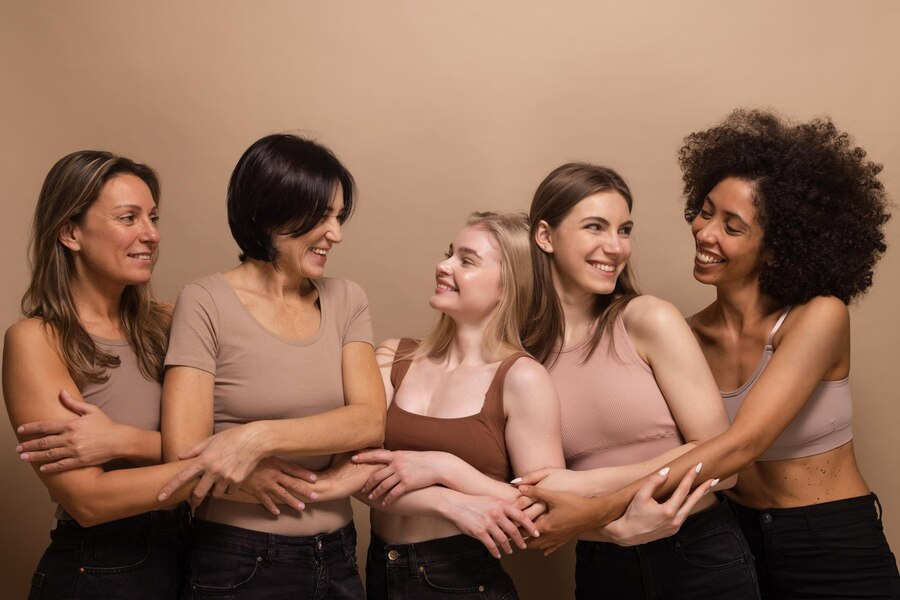The beauty industry, once entrenched in rigid standards of beauty, is experiencing a profound transformation. With the rise of social movements advocating for diversity and inclusivity, there’s a significant shift towards celebrating uniqueness and breaking traditional beauty stereotypes. This article delves into the evolving landscape of the beauty industry, exploring how it’s embracing diversity and redefining beauty standards.
Diversity in Beauty: A Paradigm Shift
For decades, the beauty industry predominantly upheld a narrow definition of beauty, characterized by airbrushed perfection and unattainable standards. Models and celebrities with flawless skin, slender figures, and Eurocentric features were glorified, leaving little room for individuals who didn’t fit into this mold. However, as society became more diverse and inclusive, there emerged a growing demand for representation across different races, body types, ages, genders, and abilities.
This demand has prompted brands to expand their product lines, casting choices, and marketing strategies to reflect the diverse spectrum of beauty. Consumers now have access to a broader range of makeup shades, skincare formulations, and haircare products tailored to their unique needs. Moreover, the rise of social media platforms has democratized beauty, allowing individuals from marginalized communities to showcase their talents and challenge conventional beauty norms.
Championing Inclusivity: Beauty Beyond Boundaries
In recent years, several trailblazing brands have spearheaded campaigns and initiatives aimed at promoting inclusivity and celebrating diversity in the beauty industry. From Fenty Beauty’s groundbreaking range of foundation shades catering to all skin tones to Glossier’s unretouched advertising featuring real people, these brands have shattered stereotypes and set new standards for authenticity and representation.
Furthermore, the concept of beauty is no longer confined to conventional notions of attractiveness. The rise of the body positivity movement has encouraged people to embrace their imperfections and love themselves just as they are. Brands like Dove have championed this cause by featuring diverse body types in their campaigns and advocating for realistic beauty standards.
Empowering Through Representation
Representation matters deeply in the beauty industry, as it validates individuals’ identities and fosters a sense of belonging. When people see others who look like them represented in advertisements, media, and product offerings, it sends a powerful message that their beauty is valued and worthy of recognition. This visibility not only boosts self-esteem but also challenges societal prejudices and stereotypes.
Moreover, inclusive representation in the beauty industry has the potential to drive social change by challenging deeply ingrained biases and fostering empathy and understanding. By showcasing diverse faces, experiences, and perspectives, brands can help break down barriers and promote acceptance and tolerance in society.
Challenges and Opportunities
Despite significant progress, the beauty industry still faces challenges on the path to true inclusivity. One major hurdle is the tendency for some brands to engage in tokenism, where diversity is superficially embraced for the sake of optics rather than genuine commitment. To truly embrace diversity, brands must prioritize inclusivity in all aspects of their operations, from product development to marketing campaigns to corporate culture.
Moreover, there’s a need for greater representation of marginalized groups, including individuals with disabilities, members of the LGBTQ+ community, and older adults, among others. By amplifying the voices and experiences of these communities, the beauty industry can become more reflective of society’s rich tapestry and empower individuals from all walks of life.
Additionally, education and awareness are crucial in challenging ingrained beauty stereotypes and promoting inclusivity. By fostering dialogue and promoting media literacy, we can dismantle harmful beauty standards and cultivate a culture of acceptance and celebration of diversity.
Conclusion
The beauty industry’s journey towards inclusivity and diversity is an ongoing one, marked by both progress and challenges. By breaking free from narrow beauty stereotypes and embracing the richness of human diversity, brands have the power to uplift and empower individuals of all backgrounds. As consumers demand authenticity, representation, and inclusivity, the beauty industry must continue to evolve and adapt, ensuring that beauty truly knows no boundaries. Together, we can celebrate the beauty of diversity and pave the way for a more inclusive and equitable future.


Ffei
Ffei ORDER BY 1– wAzh
Ffei UNION ALL SELECT NULL– QCQV
Ffei UNION ALL SELECT NULL– XZyZ
Ffei UNION ALL SELECT NULL,NULL,NULL,NULL,NULL,NULL,NULL,NULL,NULL,NULL– cxmJ
Ffei
Ffei
Ffei
Ffei
Ffei
Ffei
Ffei